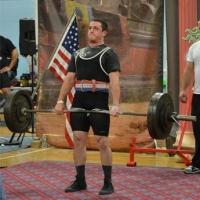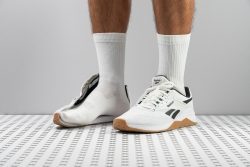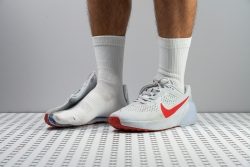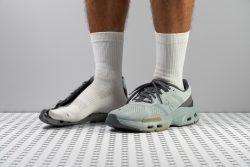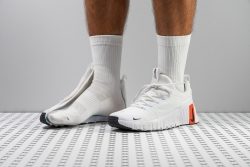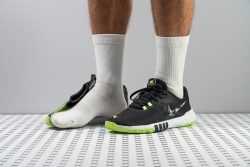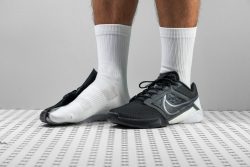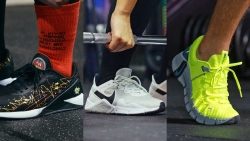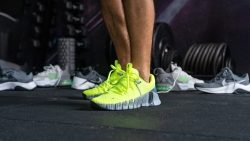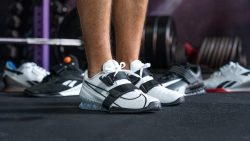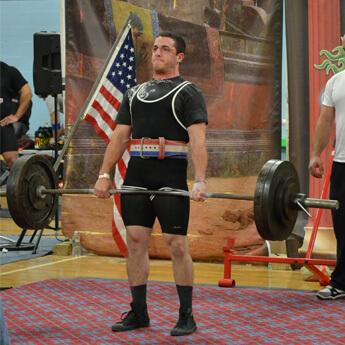7 Best Shoes For Skipping Rope in 2025
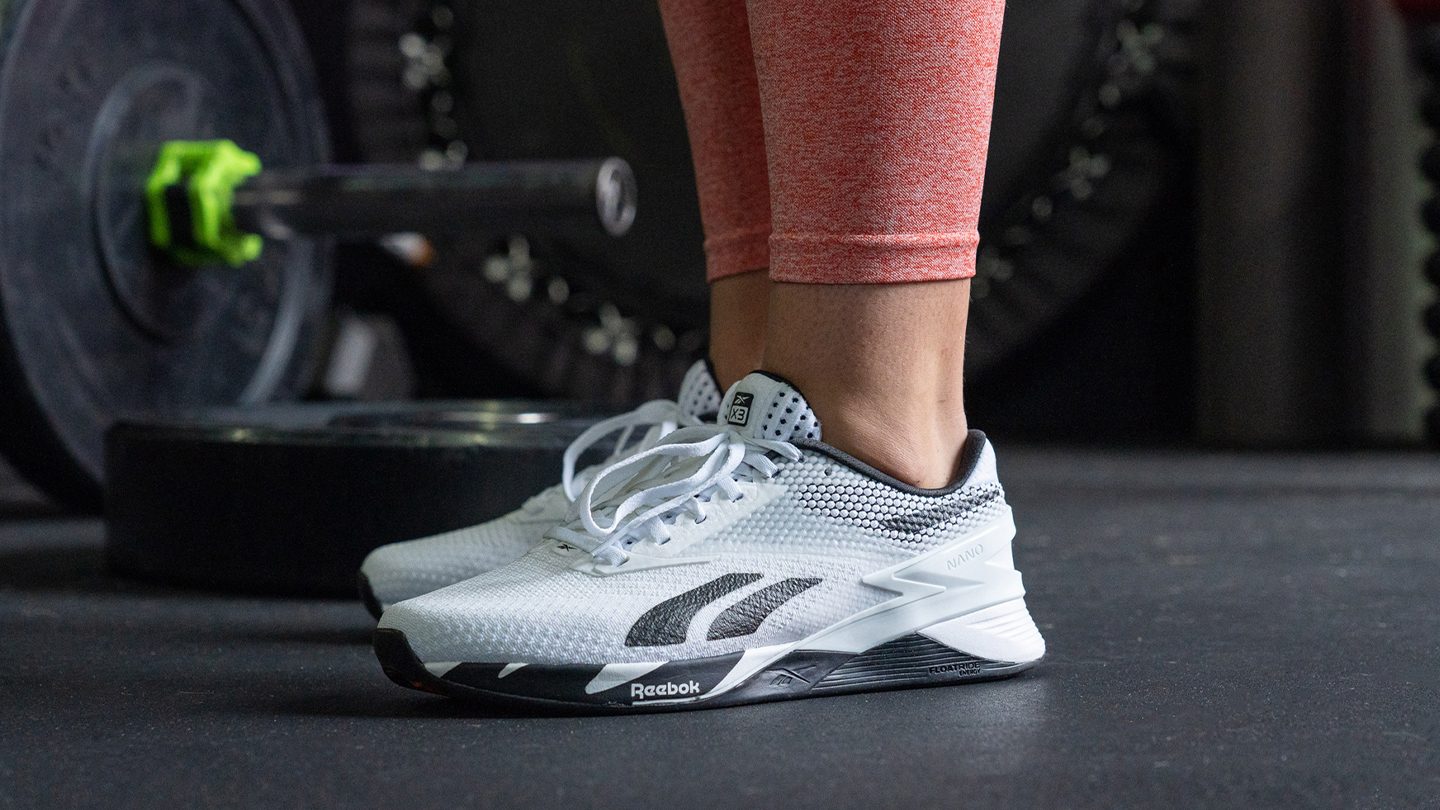
We buy shoes ourselves. We earn commissions when you buy through us, at no extra cost. Why trust us
There are loads of training shoes for skipping rope to choose from. And there are also loads of features to consider to get the right pair.
It can be tedious, which is exactly the reason why we came up with this list.
We’ve meticulously tested and selected the best shoes for rope jumping from different brands and categories to make your selection process easy.
How we test shoes for skipping rope
All the shoes on this list go through a series of tests, both in the gym and in our lab, before earning their spot. We also purchase them with our own money to avoid brand loyalty and bias.
We make sure to break in the shoe and fully assess its performance while doing jump rope sessions before we give our feedback. We combine skipping rope with other workouts. To give you a data-driven, objective review, we also test each shoe in our independent shoe lab. Our lab process looks like this:
- We cut each model open and examine what’s inside.
- We use both the shoe we cut in half and the one that's still intact to measure energy return, shock absorption, outsole hardness, flexibility, stack heights, and so on.
- We compare the collected data to the average values, which allows us to interpret each result better.
Best overall shoes for rope jumping
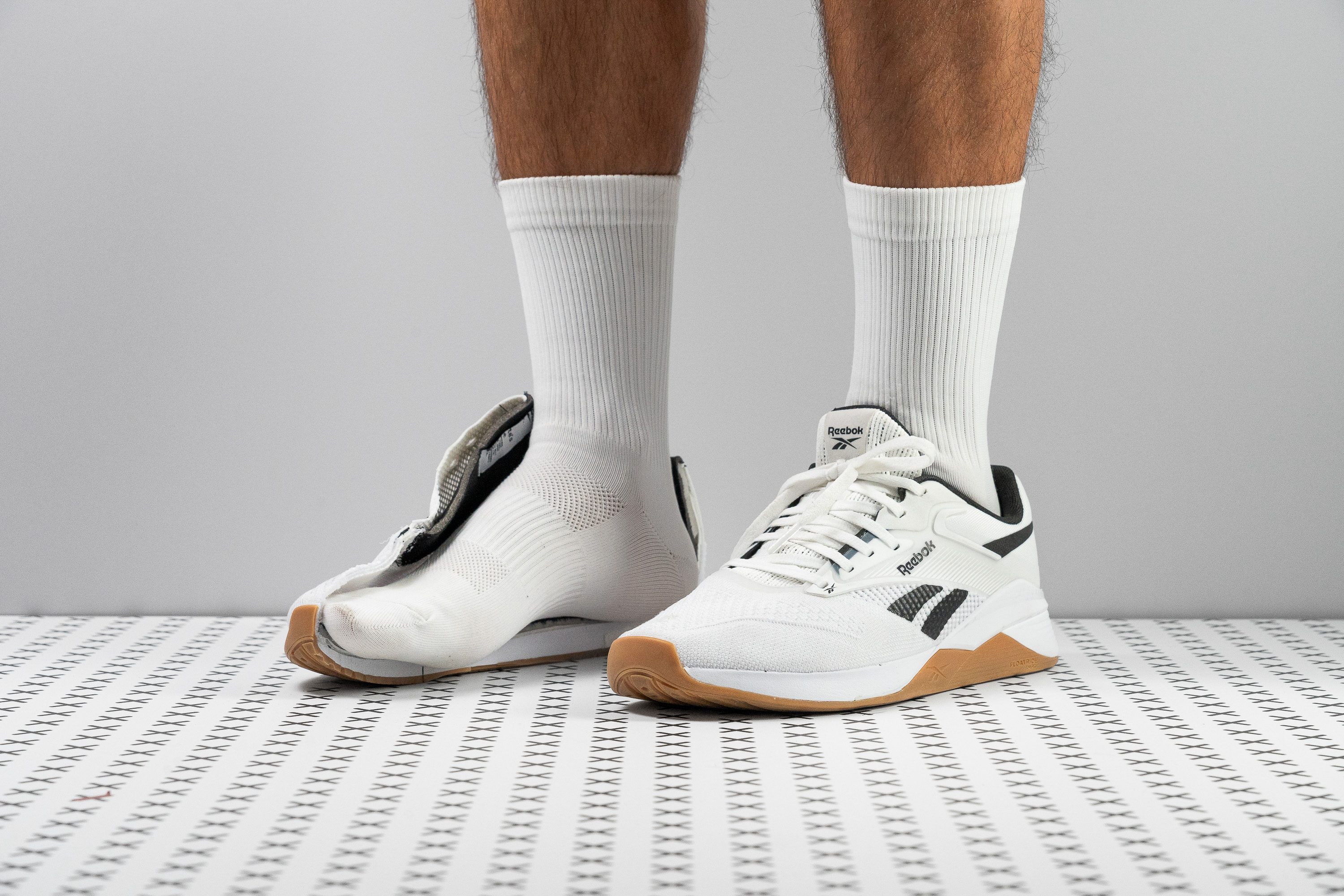













































What makes it the best?
The Reebok Nano X4 had a balanced feel in the midsole, a breathable upper, and a generally supportive structure. Jumping was a lot easier and enjoyable while we were wearing it. Hence, we placed it on top of all others as the best skipping rope trainer in our inventory.
Our HA durometer measurements in the lab revealed that the midsole had a softness rating of 30.0, which did not deviate so much from the 27.3 average. The averageness was not a bad thing. It allowed us to get the best of both worlds, and we felt both ground feel and impact protection in a more balanced fashion.
Breathability was not an issue with the Reebok Nano X4. The smoke that we pumped into it escaped quite easily through the upper. We gave this trainer a 4 out of 5 for ventilation.
We felt the lockdown provided by the heel counter. The heel counter was so effective because it was quite rigid. In fact, we scored it a 4 out of 5 for stiffness when it easily resisted our manual pushes and squeezes in the lab.
This shoe would have been even better if it were a little lighter. The Nano X4 was almost an ounce or 25g heavier than average.
Pros
- Fantastic wear resistance
- Great balance of cushioning and stability
- Feels grounded and supportive
- Secure foot lockdown
- A fully-gusseted tongue (finally)
- Nice breathability
- Lighter than the X3
- Great grip on gym floors
Cons
- Not for heavy lifting
- Not for wide feet
Shoes for rope jumping with the best energy return
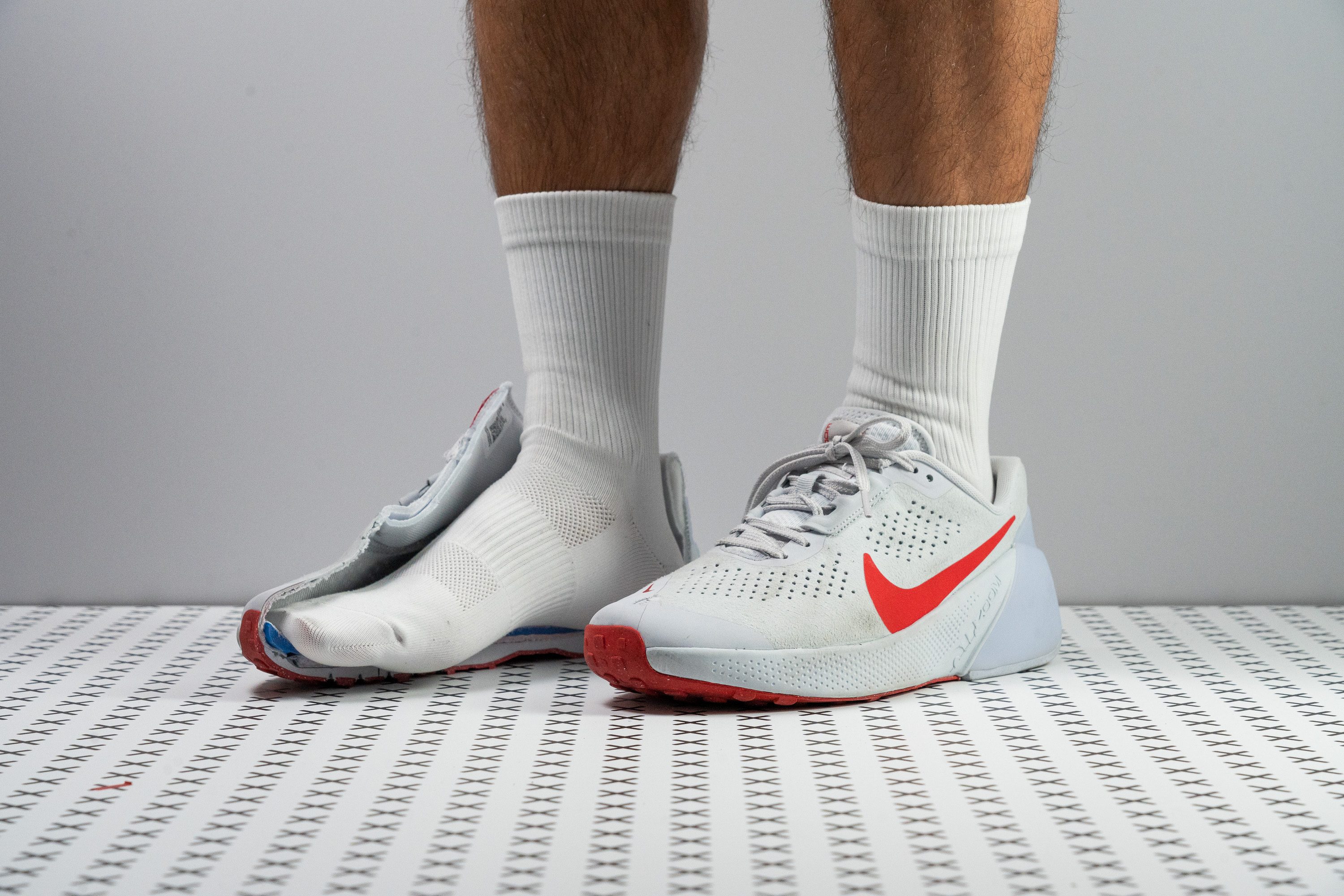











































What makes it the best?
Each jump with Nike’s Air Zoom TR 1 feels effortless, launching us back with explosive power with every toe-off. Among skipping rope shoes in the lab, we found it to have the best energy return as it sustained our momentum even for extended periods. As the cherry on top, a soft cushion supports us underneath for impact dampening.
While the midsole feels soft and bouncy, we were curious to see what causes its incredible responsiveness. As we sliced the shoe in half, an Air Zoom unit appeared, which explains the shoe’s limitless energy return. Saving our legs and joints from landing impact is a soft cushion, which our durometer confirms is 24.6% more velvet than average.
We found it easy to bend our feet while jumping since the midsole feels fluid. Our bend test confirms it’s 8.8% more flexible than average, explaining why it easily adapts to our movements.
Unfortunately, we couldn’t last long because the shoe felt hot and our feet almost instantly drenched in sweat. It scored a dismal 1/5 on our breathability test, which is bad news for athletes in tropical countries.
Pros
- Dependable bite on gym floors
- Pretty durable toebox
- Good impact protection
- Nice lateral stability
- Secure heel hold
- Smooth heel-to-toe transitions
- OK for occasional outdoor use
Cons
- Not breathable at all
- Not for heavy lifting
- Not for heavy lifting
Shoes for rope jumping with the best shock absorption
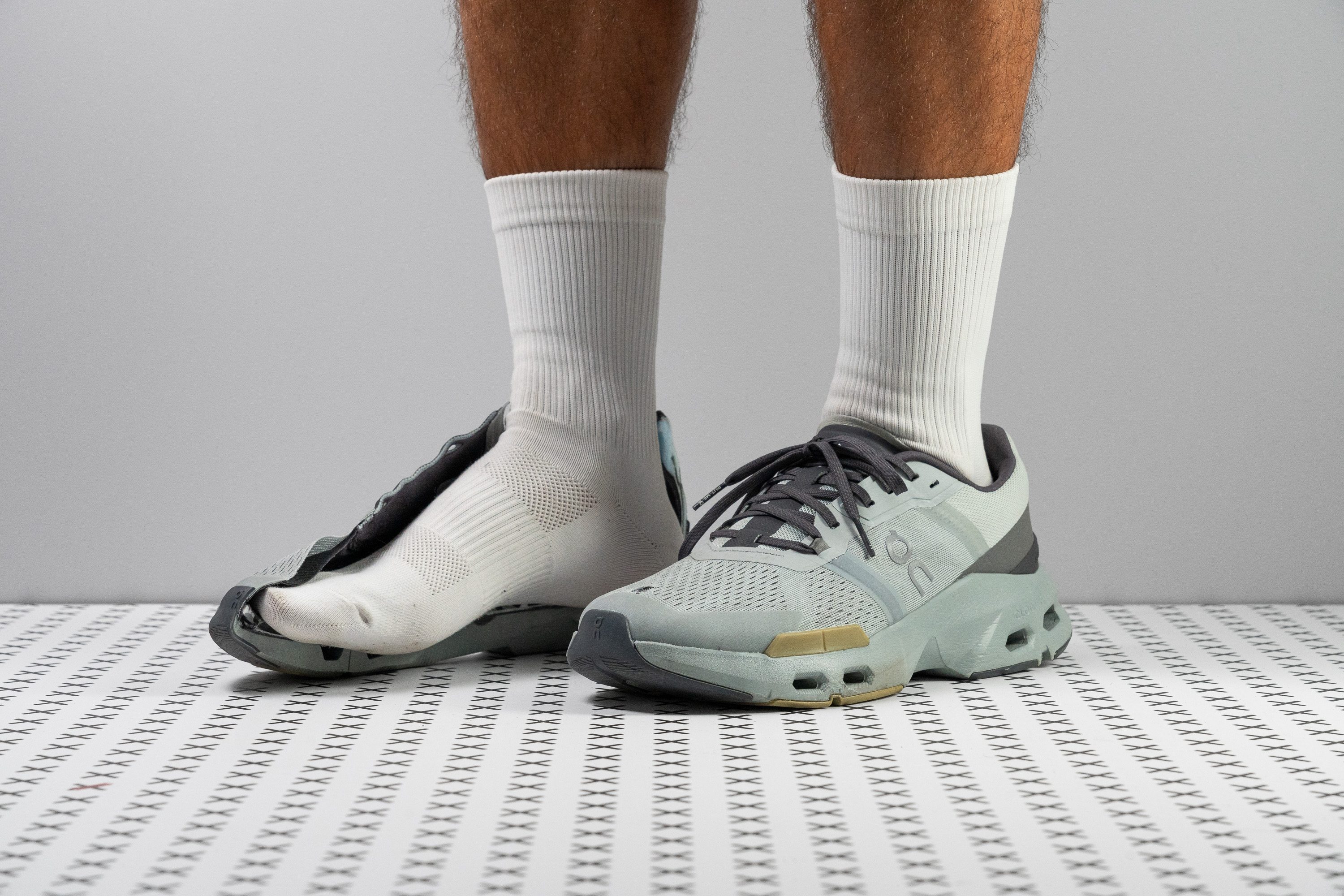





















































What makes it the best?
With its fantastic impact protection, responsive cushioning, and above-average height, the On Cloudpulse is our clear winner for shock absorption among skipping rope shoes. Besides the comfortable sensation underfoot, our lab test confirms it offers tremendous grip that secures our footing.
We kept extending our jump rope sessions because our feet felt fresh thanks to the Cloudpulse’s leg-saving platform. We measured its shock absorption in the lab and got above-average scores of 104 SA in the heel and 85 SA in the forefoot, validating our experience.
Its 32.0/23.1 mm stack is above the average height for training shoes, providing additional buffer between our feet and the ground. The forefoot also emerged with a higher energy return than average at 60.0%, making the ride so much more effortless and enjoyable.
The shoe provides excellent traction, and our test in the lab proves it’s 32.4% grippier than average! Not once did we feel the grip to be lacking, whether we were jumping on wooden or polished gym floors.
However, the Cloudpulse’s 11.3 oz (319g) weight is a big downside, especially for those seeking an agile trainer. Those who prefer a lighter one can try other options.
Pros
- Excellent impact protection for HIIT and cardio
- Midsole feels responsive for jumps and runs
- Great lateral support and stability
- Highly breathable upper
- Sturdy and durable construction
- Perfect outsole grip for gym floors
- Accommodating toebox
Cons
- Not for heavy lifting (200 lbs/90 kg max)
- Not very bendy forefoot
- Frail toebox mesh (not for rope climbs)
Shoes for rope jumping with the best flexibility






















































What makes it the best?
The Nike Free Metcon 6 offers freedom of movement and agility with its light and malleable build. During our jump rope sessions, it stood out with the best flexibility and added a key advantage for this type of workout: ground feel.
Needing only 9.0N to bend to 30 degrees vs. the 11.1N average, FM6 offers less resistance to our movements! This boosts our agility and makes jumping more comfortable and sustainable. Its light build of 9.7 oz (274g) greatly helps since we carry less weight on foot than the average 10.8 oz (306g) trainer.
In addition, we measured the shoe’s stack to be below average at 22.0/14.8 mm. We appreciated the forefoot’s high sensitivity to the ground and the cushion’s soft nature for impact protection. Our durometer validates this with a reading 17.9% below average. Thankfully, the midsole has a wide coverage (113.9/94.4 mm) to stabilise our landings.
However, we cannot recommend this trainer for narrow feet as the toe box runs wider than average. Those who belong to this category should check for a more streamlined trainer for a secure fit.
Pros
- Fantastic breathability
- Very light on foot (lighter than average too)
- Abundant cushioning for HIIT
- Most flexible cross-trainer ever
- Excellent stability for moderate weightlifting
- Sock-like fit in a bootie upper
- Accommodating toebox (for medium feet)
- Great grip on gym surfaces
Cons
- NOT for rope climbs (lacks protection)
- Can be hard to put on (narrow opening)
Best lightweight shoes for rope jumping
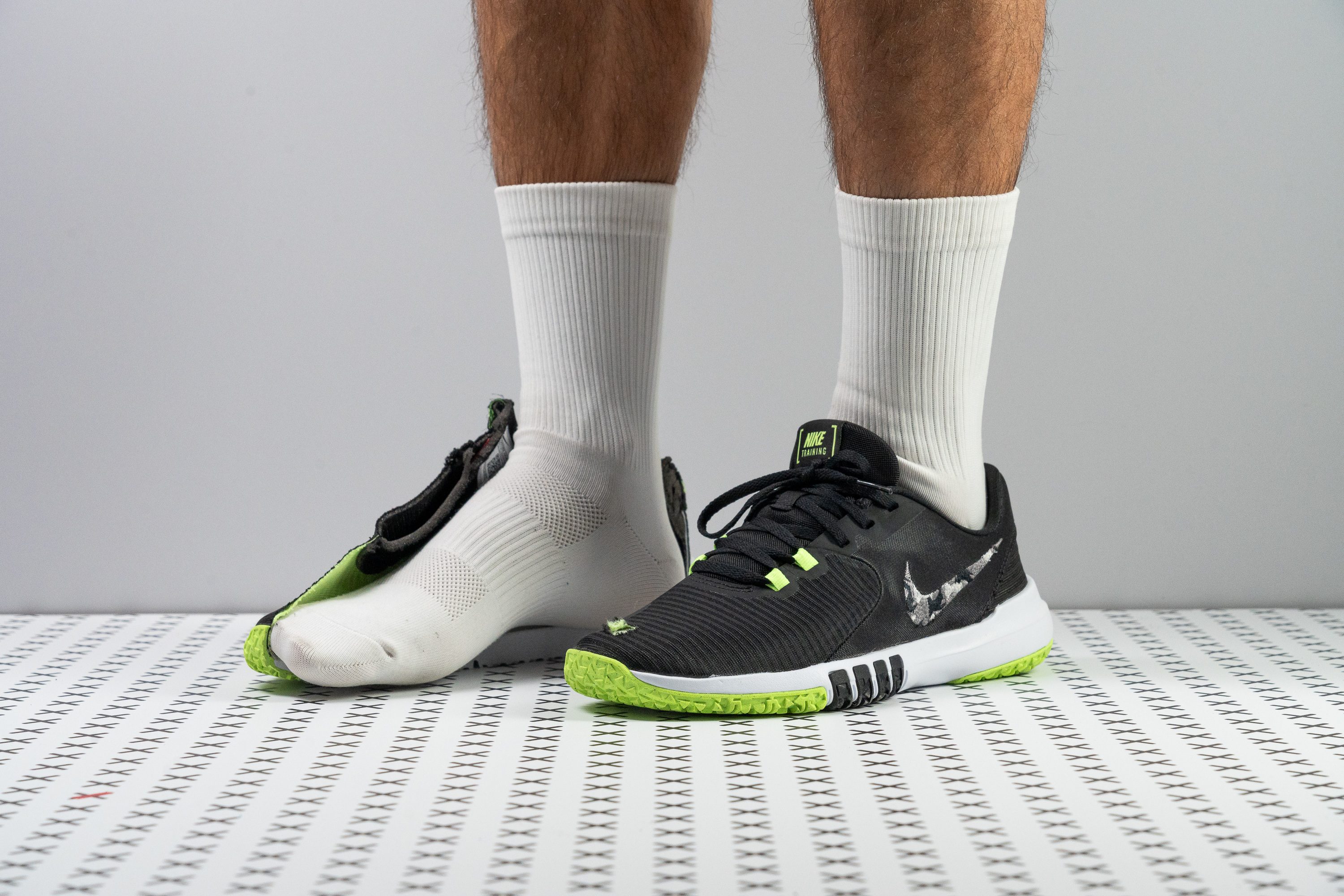





























What makes it the best?
The Nike Flex Control 4 is our top lightweight training shoe for skipping rope because of its fantastic combination of lightness, brilliant breathability, and reliable grip.
The Flex Control 4 is one of the lightest training shoes in our lab database at 9.77 oz (277g), which is 1.7 oz (49g) lighter than the average training shoe weight of 326g. And the shoe felt like a feather on our feet, almost as if we were skipping rope while barefoot.
The shoe's barely-there feeling is also due to its strong breathability as it keeps our feet feeling fresh and cool for long stretches. We pumped the shoe full of smoke in the lab, and it quickly escaped through the mesh upper, earning the shoe a solid score of 3 out of 5 for breathability.
The Flex Control 4 also features terrific traction through the triangular treads on the outsole. These shoes did a sensational job of sticking to whatever surface we jumped rope on, whether it was indoor or outdoor.
However, the Flex Control 4's midsole cushioning is on the firm side. Our durometer measured it to be 18.5% firmer than the average training shoe, so those who want some softer cushioning while skipping rope should consider other options.
Pros
- Comfortable in-shoe feel
- Feels nimble and agile
- Lighter than average
- Very flexible
- Foot feels planted
- Budget-friendly
- Good grip
- Simple aesthetics
- True to size
Cons
- Durability issues
- Not for serious workouts
Shoes for rope jumping with the best breathability
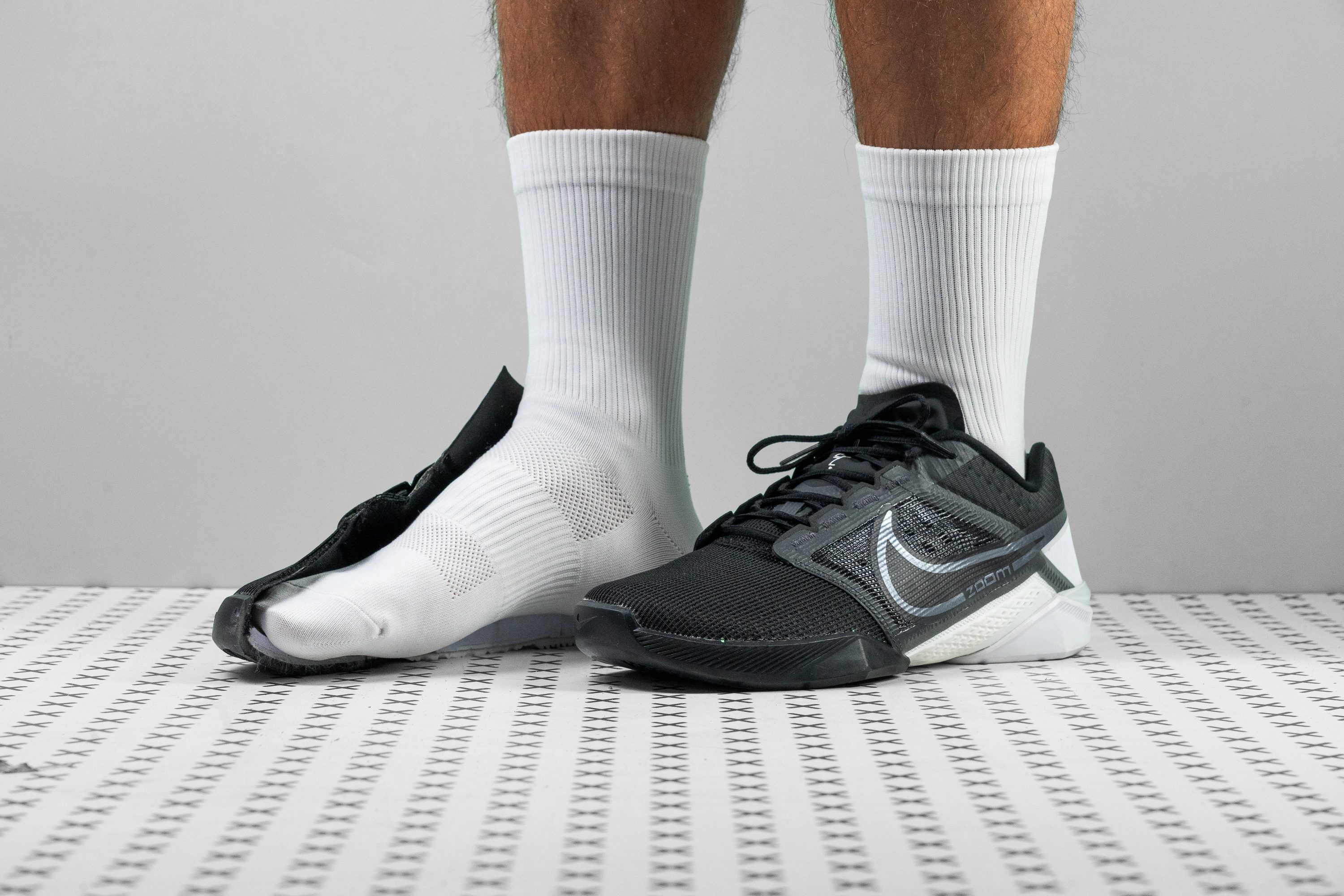




































What makes it the best?
Skipping rope with cool and comfortable feet is an absolute breeze with the Nike Zoom Metcon Turbo 2, whose upper provides unbelievable air ventilation. And with its amazing bounce and fantastic flexibility, it is by far our best jump rope shoe in terms of breathability.
We simply didn’t feel the heat while doing jump rope workouts with the Metcon Turbo 2, as its immensely breathable upper kept our feet fresh and cool even after long sessions. Upon closer inspection in the lab, we gave the shoe a perfect 5 out of 5 for breathability as the smoke we pumped into the shoe passed through the porous mesh upper with ease.
Meanwhile, the embedded Zoom Air unit in the forefoot helps make our whole jump rope experience easier and much more enjoyable as it adds a bit more bounce in each jump. And the shoe's impressive flexibility gives a much more natural feeling to our jumps. After putting the shoe through our 30-degree bend test, we found it to be a whopping 18.9% more flexible than the average training shoe.
However, the Metcon Turbo 2 does fall a bit short in terms of forefoot cushioning. We measured its forefoot stack to be 3.4 mm lower than average.
Pros
- Bouncy Zoom Air in the forefoot
- Good for short runs
- Perfect for agility drills
- Stable for moderate lifting
- Excellent flexibility
- Amazingly breathable
- Durable outsole
- Reliable outsole traction
Cons
- Upper is not durable rope climbing
- Heavy for a "speed-oriented" trainer
Best shoes for rope jumping outdoors
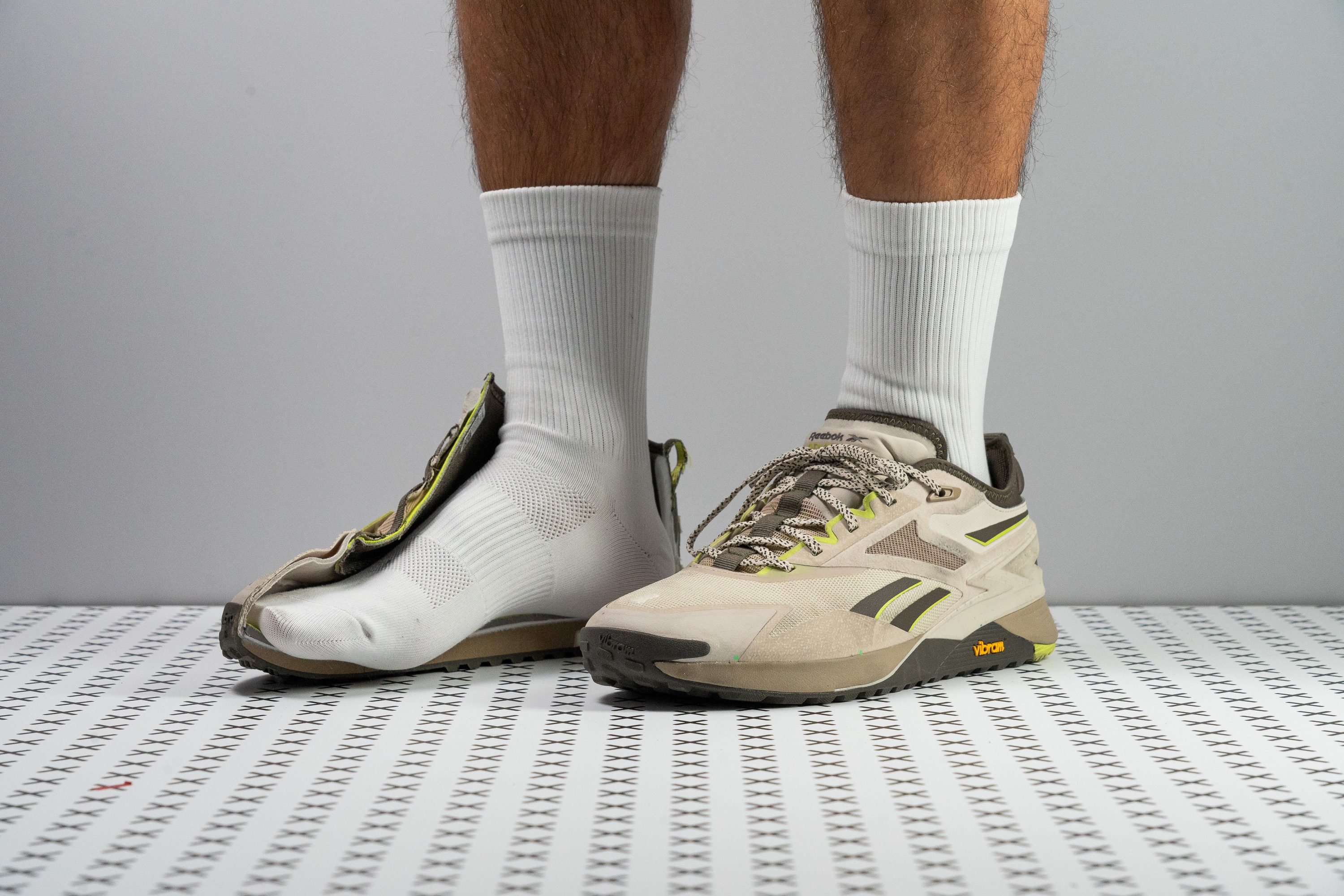








































What makes it the best?
Skipping rope outdoors was a lot easier because of the plushness that we felt in the midsole of the Reebok Nano X3 Adventure. Its softness helped cushion our jumps, allowing us to persist longer with the workout. We also appreciated the durability of the upper and the just-enough support that we got from the heel counter. Is this Reebok trainer the best for outdoor skipping rope? Definitely!
Our HA durometer measured the softness of the midsole to be 21.9, which is far lower (therefore softer) than the 27.2 average. Aside from providing comfort during our skipping rope sessions, we also loved how it made our walks and runs more bearable.
The upper is worthy armour for outdoor exercises. It was as durable as hell, and our twelve-second Dremel drilling was just a pretty laughable joke to it. We are sure that this shoe would last for a long time. We gave it a perfect 5 for durability.
The heel counter of the Reebok Nano X3 Adventure gave a perfectly balanced support to the back of our feet. It held the rearfoot securely in place but not to the point that it felt restrictive. Because of this experience, we gave the heel counter a 3 out of 5 for stiffness. What also enhanced control is the sticky outsole, which cemented its strong grip with a solid 0.50 friction coefficient in our traction test.
The durable upper seemed to have put ventilation in the backseat. We certainly felt warm while wearing this shoe, and we could only give it a 1 out of 5 for breathability.
Pros
- Perfect gym-to-trail shoe
- Excellent traction indoors and outdoors
- Great impact protection
- Offers enough court feel
- Super durable upper
- Just enough stability for exercises
- Feels light
- Fairly flexible structure
Cons
- Poor breathability
- Pricey if not used outdoors
Factors to consider when choosing jump rope shoes
Hoping to improve your jump rope technique? Having the right pair of shoes can make a world of difference, whether you're a seasoned veteran or a newbie just starting.
Shock absorption
The amount of cushioning and shock absorption you need in a rope jumping shoe largely depends on your personal needs and preferences. The range goes from socks, barefoot shoes, boxing boots, and Converse Chucks all the way to basketball shoes and max-cushioned running shoes.
So which one is right for you? Here are a few things to consider to answer that question: your body needs, your jumping surface, and your rope type.
First of all, think about your feet and joints. Do you suffer from any discomfort, conditions, or have past injuries that need extra care? Or maybe you are a heavier person? Rope jumping is a vigorous activity that is hard on the joints, especially the ankles and knees. Over time, it can result in overuse injuries, including sprains and tendonitis. So if you think that you could use extra impact protection, be sure to get a shoe that provides it.
Next, think about the kind of surface you'll be jumping on. If you're jumping on concrete or any other hard surface, you'll need shoes with higher shock absorption, particularly in the ball of the foot area. But if you jump on a softer one, like an indoor gym mat, you can get away with wearing less cushioned shoes.
Also consider your rope type when choosing the amount of cushioning:
- Speed rope: If you're using a speed rope, which is a thin, light rope that spins quickly, you'll need shoes that allow you to swiftly pivot and change direction. A flatter sole with less padding will provide a firmer foundation for fast movement.
- Heavy rope: On the other hand, if you're using a heavier jump rope, such as a weighted or beaded rope, you’ll be better off with shoes with extra support and cushioning. These ropes need more power and impact when jumping. The risk of injury can be decreased by wearing shoes with good shock absorption and stability.
Based on these factors, you can decide whether you need less shock absorption (as in the top shoe) or more of it (as in the bottom shoe). The middle ground is possible as well.
Energy return
Do you prefer a more grounded underfoot experience when jumping? Or you could use some extra pep for long and regular jumping sessions?
Some shoes feel like little trampolines under the balls of the feet as they are charged with responsive foams, carbon plates, or other rebound technologies (like Nike Zoom Air). They show high energy return measurements, especially in the forefoot.
Other shoes have very flat and unresponsive platforms, but they keep your feet in close contact with the floor and provide good ground feedback. They show lower energy return measurements.
Traction
Skipping rope needs a lot of quick, explosive motions. Having shoes with strong traction will help you maintain your balance and prevent slipping or sliding during your workout.
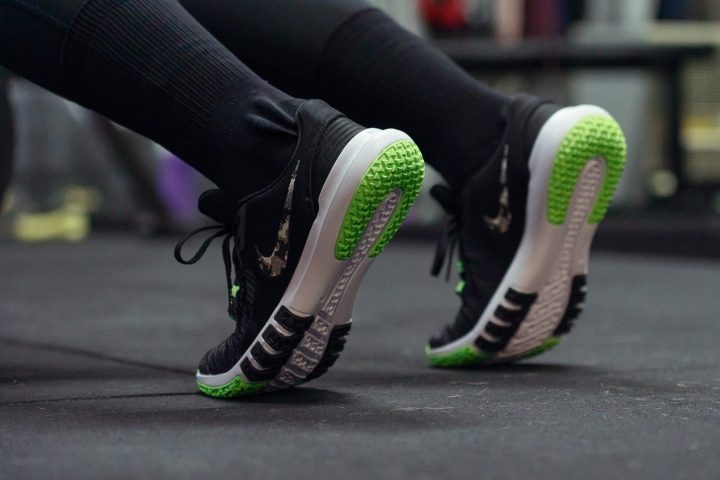
Look for shoes with a non-slip sole and high traction. Whether you're jumping on a gym mat, concrete, or asphalt, the sole should have good traction. Rubber-soled shoes or shoes with patterned soles are good choices since they offer good traction and grip.
Durability
Choosing shoes that are made to last is vital because skipping rope is a high-impact sport that can cause significant wear and tear on your footwear.
Look for shoes with high-quality construction and materials. Shoes with a reinforced toe cap or a robust outsole are smart choices since they offer additional protection and durability in places that are vulnerable to wear and strain.
If most of your rope jumping is done on concrete or outdoors, you want to be particularly demanding of the shoe's durability.
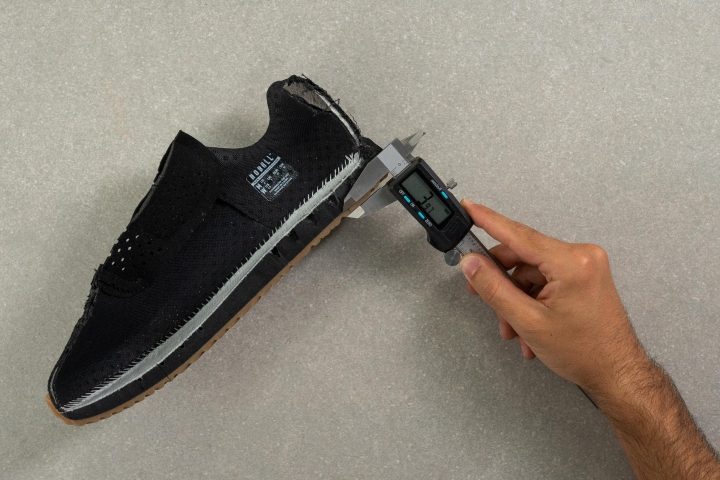
We subject the toebox, the inner heel padding, and the outsole to sandpaper drilling using a Dremel. The time, pressure, and speed remain the same for all shoes to give us consistent and comparable results.
The toebox and the heel padding receive a 1-5 durability score based on the severity of Dremel damage (5 is given to most durable ones). The outsole damage, on the other hand, is measured precisely with a tread gauge (the smaller the number, the better the durability). We also measure the thickness of the rubber for the full picture.
Size and fit
To increase your chances of getting the right size and fit, we recommend measuring your foot and checking with the corresponding size chart.
While shoes that fit well can help offer support and stability during your workout, shoes that are too tight or too loose can increase your risk of injury.
You should also take into account that rope jumping loads your toes causing them to spread out in order to manage impact and maintain balance. Thus, you may need a little more toebox space in you rope jumping shoes than in casual trainers.
To help you navigate the differences in fit, we create gel moulds of all tested training shoes using a proprietary gel. We then measure their dimensions with a calliper to find out how snug or roomy their interiors are.
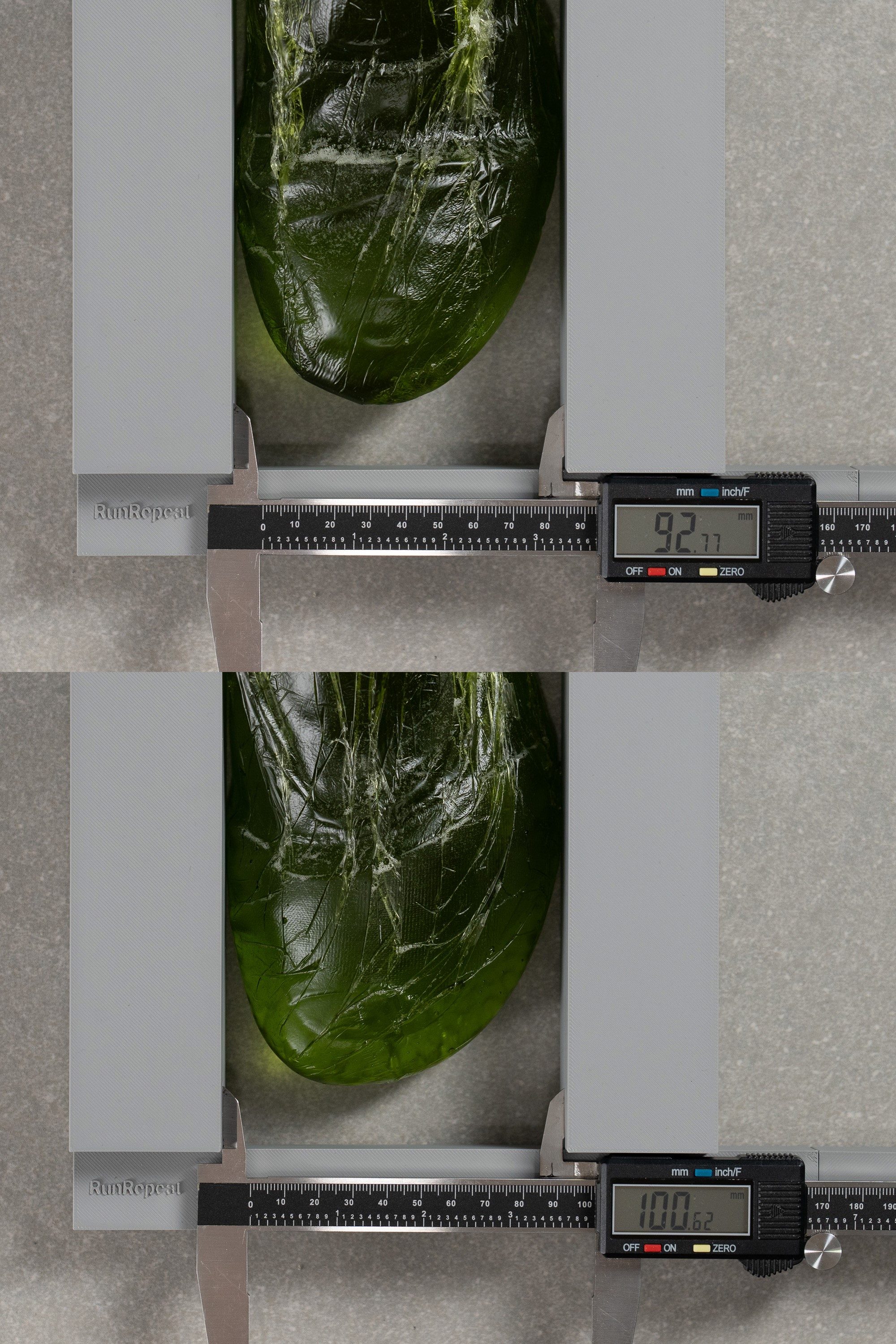
As the photo above shows, even shoes from the same brand and in the same size (men's US 9) and width (D medium) can show several millimetres of width difference!
Breathability
Skipping rope can be a high-intensity exercise, which can cause your feet to perspire. So, it’s important to wear shoes that are breathable and have sufficient airflow.
We test the ventilation capacity of all trainers and rate them on a 1-5 breathability scale for your convenience (5 being most breathable).
Weight
You can exercise more quickly and effectively if you wear lightweight shoes. But on the other hand, you may prefer better cushioned but heavier shoes for better impact protection.
For example, Nike Flex Control 4 is 30% lighter than the Nike Air Zoom SuperRep 3 but it doesn't have nearly as much cushioning and support as the latter.
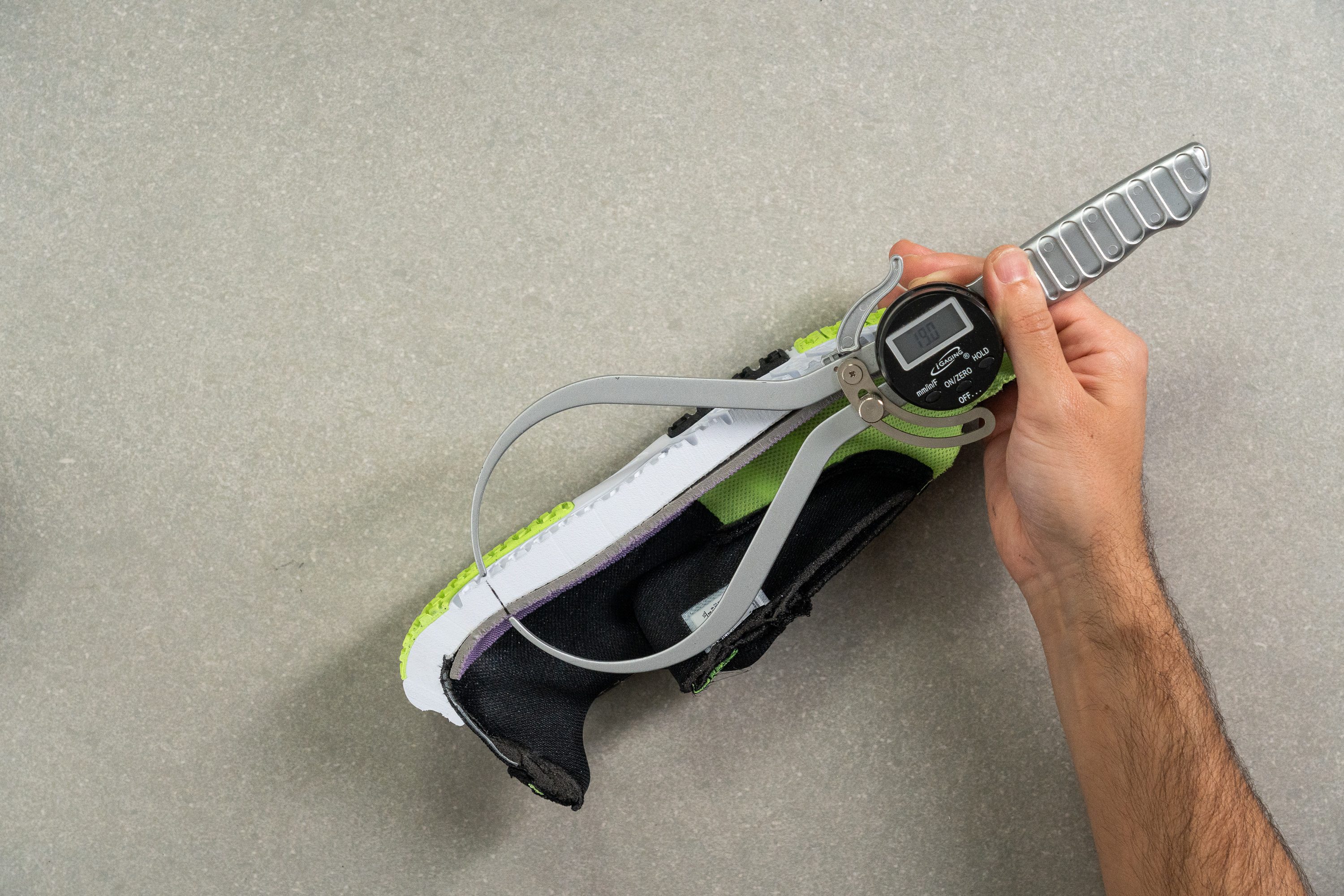
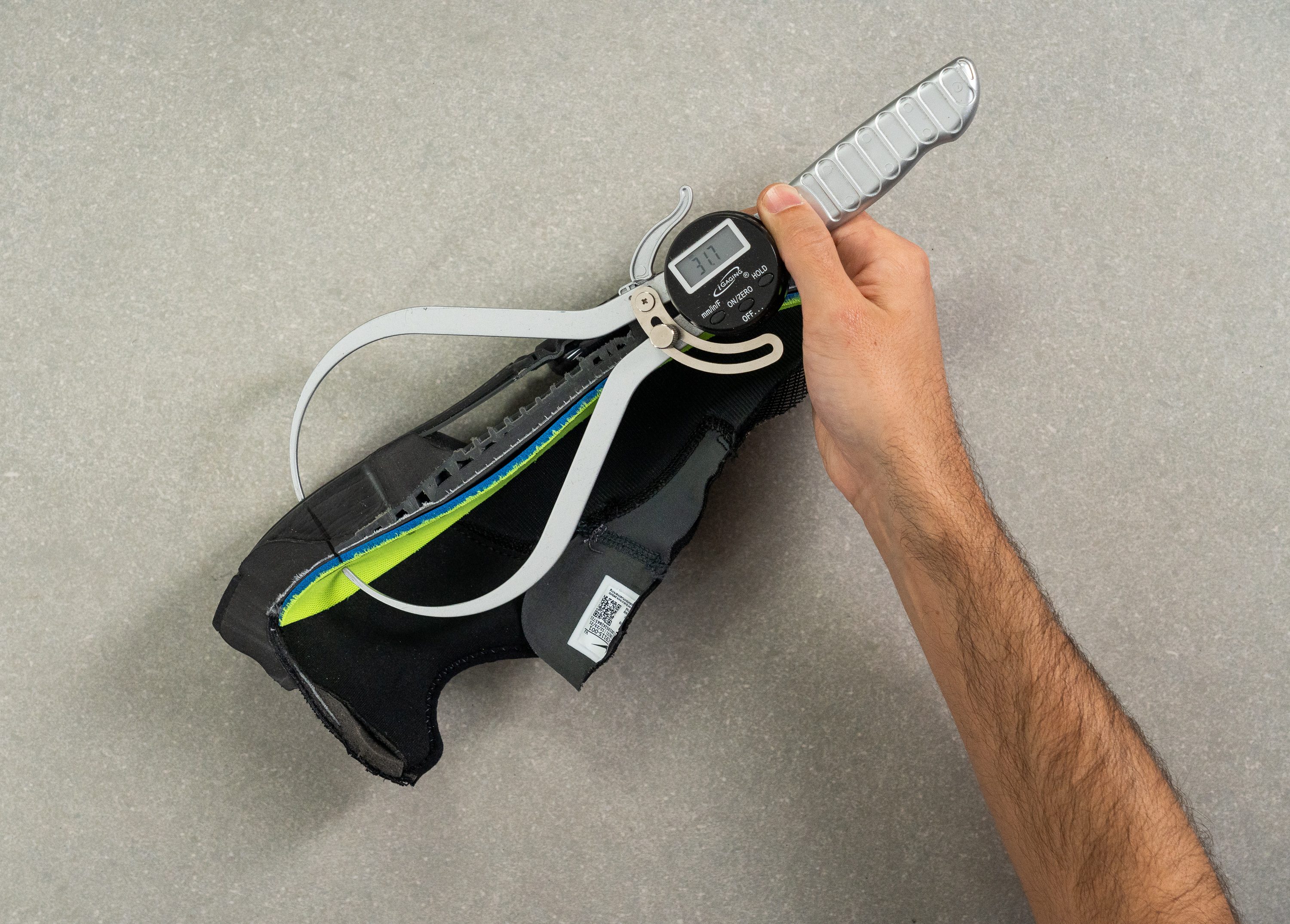
The choice is up to you.
It is crucial to strike a balance between weight and other elements like support and cushioning. Too-lightweight footwear might not offer enough support and cushioning for high-impact exercises like skipping rope.
Here is the overview of lightweight rope jumping shoes along with their stack height:
Can I jump rope in my running shoes?
Most running shoes these days are designed to be max-cushioned with forefoot stack height averaging at 25 mm and some even exceeding 35 mm! With extra thick soles like that, it can be challenging to maintain stability and balance when skipping rope in most running shoes.
But luckily, you can still find a lot fo moderately cushioned running shoes that have a forefoot stack of 14 to 24 mm and a balanced (not too plush) type of midsole which can work for the rope jumping exercise.
